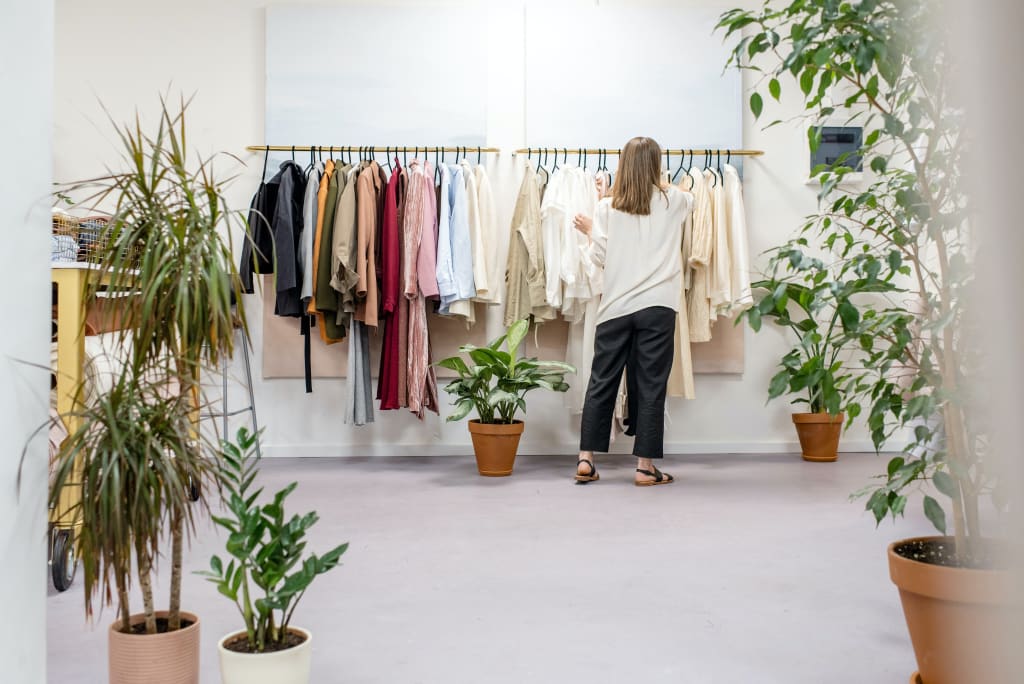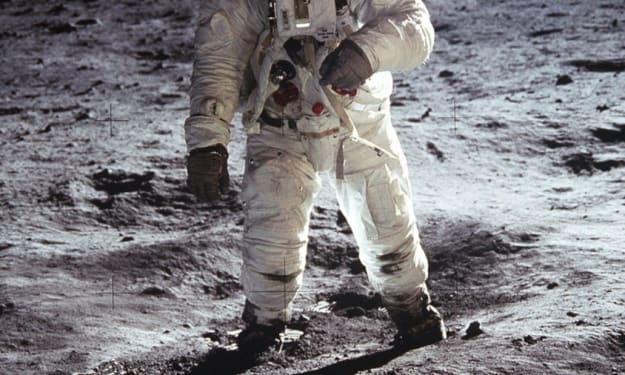Greenwashing: The latest fashion trend is an illusion
Sustainability has taken off as a profitable marketing tactic in fashion

3 December 2021
There’s a shadow clouding the vision of a more sustainable future for fashion. It’s called greenwashing, and it’s growing with the proliferation of fast fashion.
“It's marketing and communication messages that are put out by brands. Fashion is guilty of it, yes, but it is also in food, in the beauty industry and things like that,” says Dr Rachel Matthews, Head of Fashion and Sustainability at Collarts.
“The marketing claims or the copy that go with their advertising and promotional material, say or infer things about sustainable practice, without actually providing any evidence and proof.”
When a brand describes a product as “green” or “eco-friendly,” what does that mean?
According to Dr Matthews, “One of the reasons why greenwashing is so prevalent is some of the words and the language that's used within this space does not have a kind of clear dictionary definition. So a brand can describe something as ‘green’ or ‘eco-friendly’ and there is no clear actual definition of what that means. So the consumer or the person reading that assumes that it's sustainable, when there's no real evidence to back that up.”
In 2021 the Changing Markets Foundation released a report in which it was revealed that 59% of “green” claims by major UK and European fashion brands were found to be unsubstantiated.
Some of the worst offenders included H&M, ASOS, and Boohoo.
The report stated that Patagonia, which has built its image partly on sustainability, refuses to agree to enter into a sustainability assessment.
Fast fashion brands are popular with young consumers, who are also more likely to be environmentally conscious. Dr Matthews says that some brands paradoxically try to cater to both of these demands at once.
“They are seeing it as a trend, they recognise that it's the search term that fashion consumers are using and so they're piggybacking on that. And they are treating sustainable fashion as a bit of a buzzword and a bit of a trend at the moment.”
Shein is one example of a popular brand which has gained momentum on TikTok through ‘Shein hauls.’ TikTok creators purchase large hauls of clothing which they then show off to their followers.
Shein’s website claims that the brand is “fully committed” to “environmental impact mitigation”.
One such endeavour is a recycling program which rewards participants with Shein gift cards with which they can purchase more Shein products.
It seems unavoidable that fast fashion brands which live off of ever changing trends would attempt to appeal to the latest trend: sustainability.
“I think what they're trying to do is counter the bad publicity that's out there. There is this kind of growing awareness that fast fashion is causing environmental damage, and I think it's a kind of way for fast fashion brands to go, ‘Oh, we're trying to change our practices,’” says Dr Matthews.
UK-based fashion blogger Emily Malvern says the rise of sustainability as a trend in fashion is both “a blessing and a curse.”
“It gets people talking about sustainability in fashion which we need for collective action for a sustainable future. However, the trend of sustainable fashion gets taken over by fast fashion giants who misinform consumers and push blame in order to sell more.”
This presents consumers with a new challenge: which claims are genuine, and which are not?
The duty falls upon the customer to educate themselves so that they can discern the difference.
“When shopping I tend to look for brands that can back up their sustainability claims. This might be stats, transparency about their garment workers & manufacturing process and any circular or regenerative systems they have in place,” says Ms Malvern.
However, she recognises that “not everyone has the time or energy to look all this up.”
There are tools which can help – the app Good on You analyses the sustainability of an item, instantly rendering any brand transparent.
The only way to get to the root of this issue is for more brands to start making a genuine effort towards sustainability.
Dr Matthews says, “I think there's two versions of what's going on in sustainable fashion. Some people are committed to the future of fashion and want it to be more sustainable, and other people are really still in that fast fashion cycle and are just trying to grab on to this idea that ‘Oh, everyone wants it sustainable at the moment’”.
Ms Malvern adds, “Sustainability and ethics are treated like a bonus add on, when really it should be a normal part of their business model.”
Mackenna Elwin, a member of the sustainability team at Melbourne brand Etiko, says consumer demand is one key to integrating sustainability into the core of more business models.
“Fashion brands in Denmark, their sustainability is ingrained in their policies from the government. We don't have that over here in Australia.”
“The brands doing the one-off sustainable collections is great, but it's us consumers buying those collections and then asking you to do this for your entire range sort of thing.”
Etiko exemplifies a brand who actively works for environmental sustainability, and brings customers along every step of the way.
The brand uses organic cotton, which contains less chemicals and uses much less water than normal cotton. Their sneakers are also made from rubber ethically sourced from trees, rather than synthetic rubber.
“We try to be as, I guess, communicative as we possibly can. As everything is produced, and as our new stock is coming in, we try to update our customers on the arrival on what's being made, how it's being made.”
“We include this all in our website as well. So we have a complete list of our supply chain and the people that we do work with.”
Ms Elwin says that demand and education will be the strongest tools in pushing past greenwashing towards a more sustainable future in fashion.
“It does come down to us consumers demanding change, and steering away from those brands who have been identified as an unethical or unsustainable brand.”
About the Creator
Enjoyed the story? Support the Creator.
Subscribe for free to receive all their stories in your feed. You could also pledge your support or give them a one-off tip, letting them know you appreciate their work.





Comments
There are no comments for this story
Be the first to respond and start the conversation.